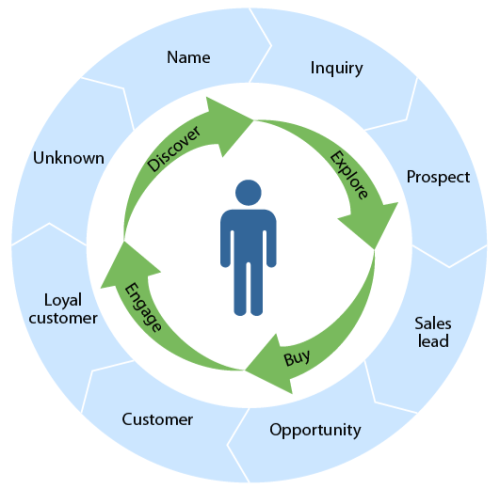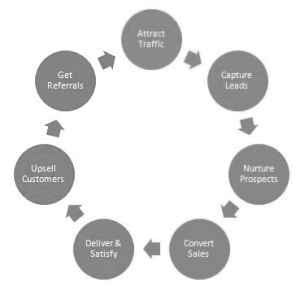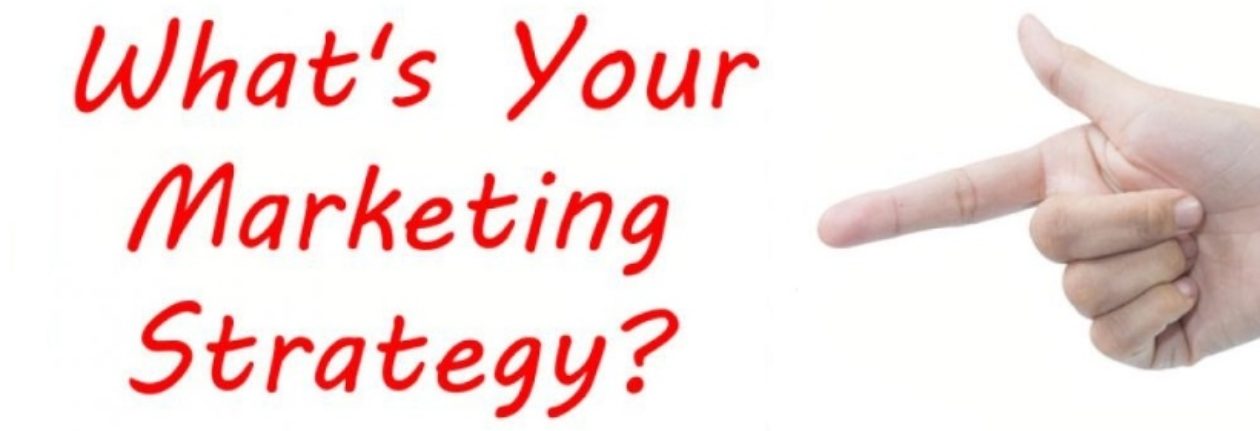“How To Better Engage Buyers Lifecycle To Maximise Your Sales”
Marketing has grown increasingly complicated over the past decade, media choices have exploded and buyers have empowered themselves more than ever before…
The question is how you can make use of and ethically take advantage of buyer lifecycle behaviour to maximise your sales and make your marketing funnel even more profitable?
Dear Business Owner,
You probably already know a large portion of your prospects aren’t ready to buy, the statistics show less than 3% when they initially become aware or connect with you…
That’s why you want to always capture their contact details via email address to form a relationship, follow up and continue to nurture and empower through buyer life cycle.
How to analyse and assess the buyer lifecycle:
- Problem realised
- Search for help
- Choice to be made
- Solution delivered
- Lifetime value of customer
Defining buyer lifecycle and understanding customer experience throughout each stage and transition can significantly improve revenues, customer lifetime value and retention.

Early stages: buyer is aware of problem and searching for ways how others have solved it.
Middle stages: buyer wants to know what solution can be used to best solve problem and how much does it cost in order to solve problem?
Final stages: buyer wants to know what it takes to purchase and implement solution and what competitive options exist?
A simple way to look at the buyer lifecycle is to break it down into three stages:
- Awareness of your product or a need customers want to fulfill
- Analyse is when a customer evaluates solutions to their problem
- Buyer Lifecycle connects behaviour (urgency to purchase)
It’s no surprise buyer lifecycle is a crucial KPI metric to understand because behaviour is transforming at break neck speed as online research allows greater choice and power.
This process exposes buyers to brands they might not have previously considered.
Your customer experience strategy and marketing funnel take into account the buyer lifetime value and profits generated in order to differentiate your marketing.
Your true role in business and that’s why you want to focus on understanding buyers.
Essentially, the buyer lifecycle allows you to better understand your customer and fit this information or data into maximising your sales…
The buyer lifecycle consists of buyers relationship with brand as buyer continues to discover options, needs, make purchase, engage with brand experience and peers.

Defining the buyer lifecycle with a better fit because of 3 key reasons:
- Buyer lifecycle is at the core of your marketing because focus involves the entire brand experience with ongoing relationship
- Buyer lifecycle recognises marketing is continuous and surrounds buyer with total brand experience across relationship phases
- Buyer lifecycle addresses buyer psychology, experience, marketing mix performance and business value…
The Buyer Lifecycle Phases
Discover: Every buyer must discover a brand, product category or personal want or need, this is the initial emotional trigger which leads to a new or repeat purchase.
Buyers are quicker to discover brands through positive word of mouth as well as good distribution of media.
Explore: Buyers explore the brand and options. When visiting a website or handling products in a shop environment, buyers are searching and exploring options.
For example: Buying a car, this might involve long conversations with salespeople and friends, multiple web searches, test drives, and many other events which are all critical aspects of the brand experience.
Buy: Buyer experiences during include product availability and satisfaction with the checkout process.
Includes actual price paid, perceived value and experience with sales if there is a problem.
Whether the sale is via online store like Amazon.com or direct from manufacturer’s site the brand experience is maintained throughout all channels including in-store, customer service and call support.
Engage: After buying a product or service, buyers engage with brands in several ways.
To inspire loyalty, you must engage buyer regardless of the touch points the buyer uses.
Summary of the buyer life cycle three keys areas:
- Buyer’s psychology
- Marketing mix and KPIs measurement
- Business value of marketing to align marketing strategy.
Each area is part of the buyer lifecycle and overall marketing strategy, which includes:
- Buyer interest mapping to understand pain points and emotional triggers
- Metrics-based marketing to optimise total brand experience
- Maximising the buyer’s lifetime value
Keeping a profile on customers helps with creating and defining up-sell opportunities, which (especially if dealing with pain-points or needs) can improve customer happiness.
The Key Questions For Buyer Lifecycle Improvements
- Where are customer needs least met?
- What stage of buyer lifecycle is your weakest?
- Could you improve your customer retention?
- Are there other products or services you could offer up-sell?
- Could these up-sells improve customer happiness or commitment?
- If you are weak with customer acquisition where is your drop off point in lead generation or further along marketing funnel in sales?
What if you and your business embraces this marketing strategy? The buyer lifecycle transforms how you communicate, connect, engage and think about your business…
Buyer Lifecycle
